The term “boater homing” refers to the concept of using a boat as both a recreational vessel and a mobile home, allowing owners to live aboard while traveling overland or cruising waterways. The exact origin of the term is unclear, but it gained popularity in the 21st century as trailerable boats like Ranger Tugs and other compact cruisers became increasingly popular. These boats offered features that made them suitable for both on-water cruising and land transport, blurring the lines between boating and RV lifestyles.
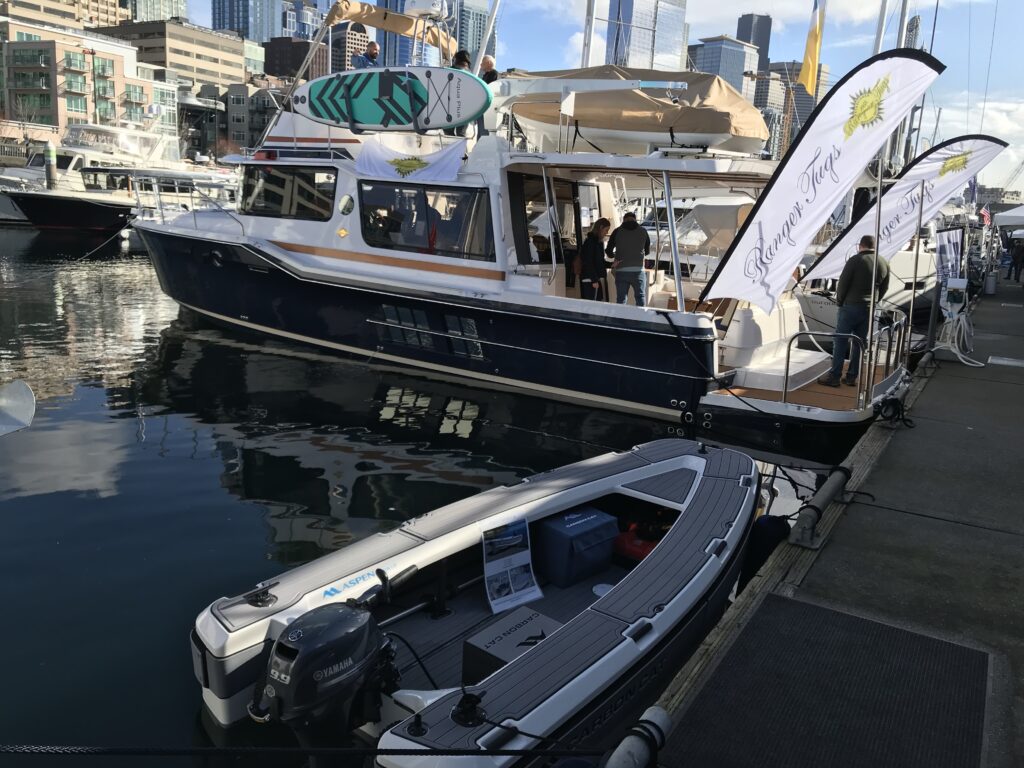
Is the MacGregor 26X an Example of Boater Homing?
Yes, the MacGregor 26X can be considered an example of boater homing:
- It is a trailerable sailboat with a water ballast system, making it easy to transport overland.
- The boat features a cabin with basic amenities like berths, a galley, and a head, allowing for overnight stays or extended trips.
- Owners often use it as a hybrid between a sailboat and a small motorized cruiser, suitable for both waterborne adventures and land-based travel.

What About Houseboats?
Houseboats are generally not considered part of boater homing, as they are typically not trailerable or designed for overland transport. Instead, houseboats are stationary or semi-mobile homes on water, often used as permanent residences or vacation homes. While they share the concept of living aboard, they lack the versatility of trailerable boats like the MacGregor 26X or Ranger Tugs.
In summary, “boater homing” specifically applies to boats that combine mobility on both land and water with livability, making trailerable boats like the MacGregor 26X a good fit for this lifestyle, while houseboats fall outside this definition
The terms “pocket cruiser” and “boater homing” describe two distinct but overlapping concepts in the boating world. Here’s a comparison and contrast:
Pocket Cruiser
- Definition: A small sailboat, typically under 30 feet, designed for recreational cruising and occasional club racing15.
- Key Features:
- Includes essential amenities like berths, a galley, and a head, providing the comforts of larger boats in a compact size1.
- Often trailerable with lightweight designs and retractable keels, allowing for easy transport by passenger vehicles13.
- Capable of long offshore passages when properly equipped, as demonstrated by notable sailors like Lin and Larry Pardey1.
- Primary Use: Focused on cruising, with an emphasis on seaworthiness and compact living spaces for extended trips.
- Examples: West Wight Potter, Dana 24, Pacific Seacraft Flicka 2035.

Boater Homing
- Definition: A lifestyle concept where a boat serves as both a recreational vessel and a mobile home, combining waterborne cruising with land-based travel.
- Key Features:
- Typically involves trailerable boats, allowing owners to transport them overland to new destinations.
- Boats are equipped with amenities for living aboard, such as sleeping quarters, cooking facilities, and heads.
- Includes both powerboats (e.g., Ranger Tugs) and some sailboats (e.g., MacGregor 26X), emphasizing versatility across land and water.
- Primary Use: Focused on mobility and flexibility, enabling owners to explore inland waterways or cruise coastal areas while also using the boat as an RV-like home.

Comparison
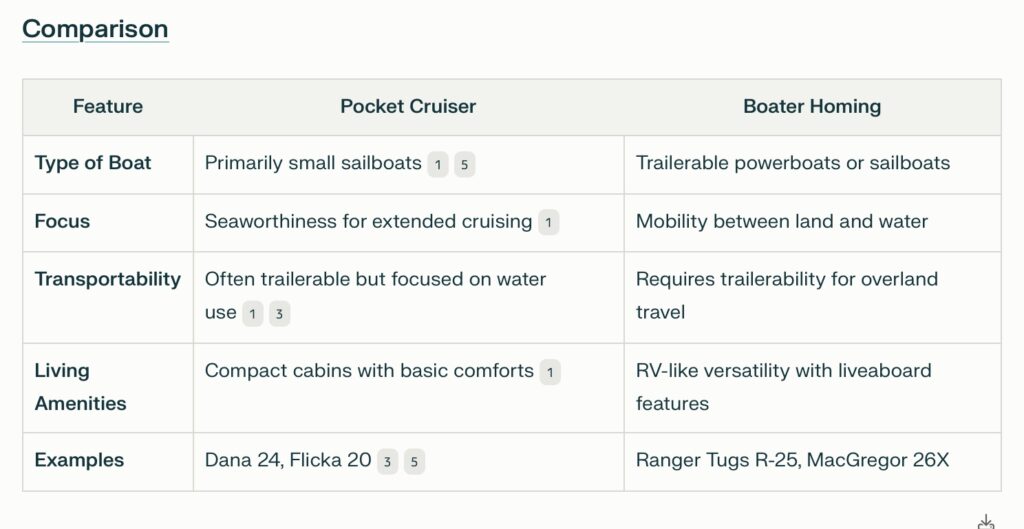
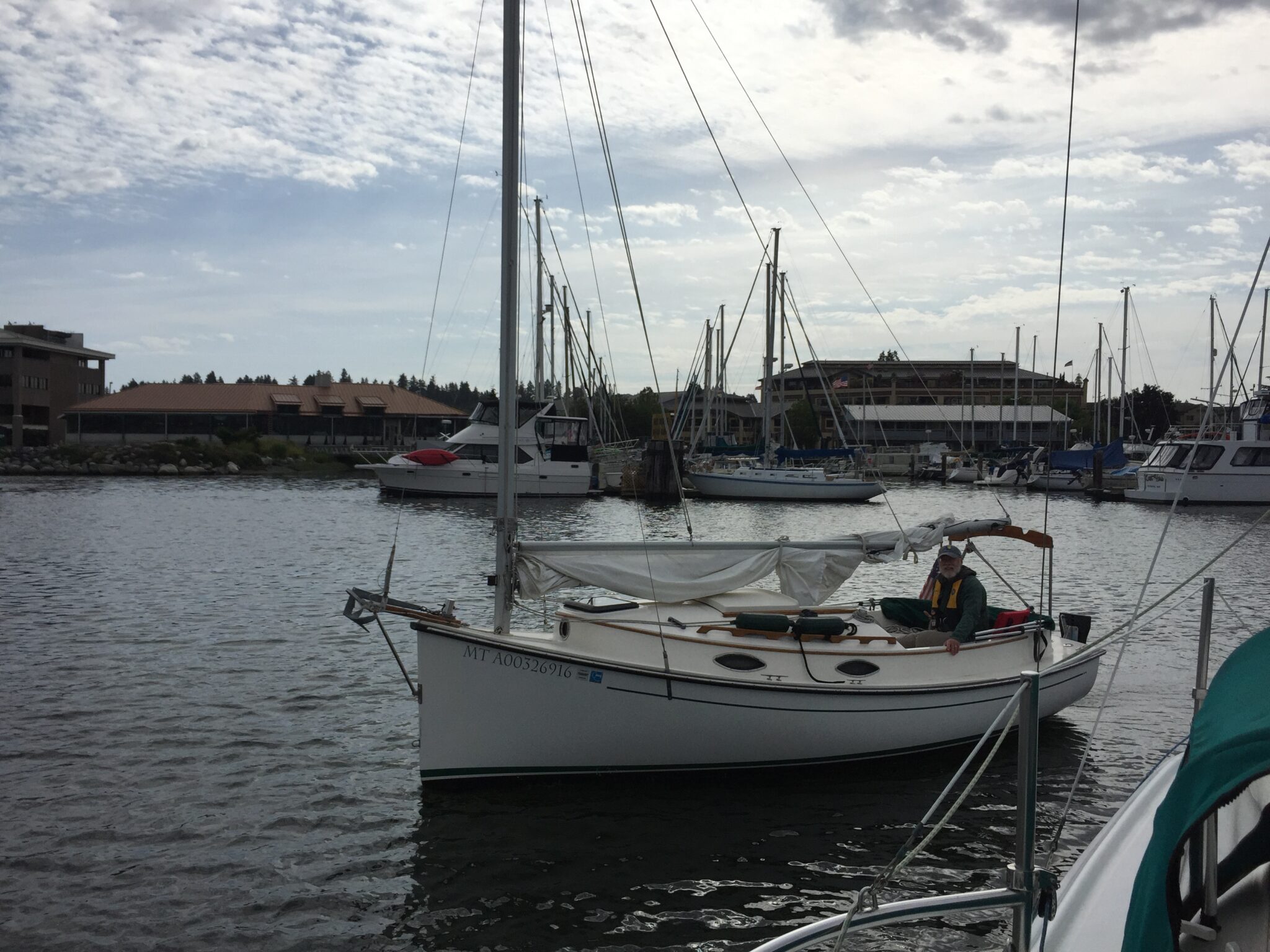
Contrast
- A pocket cruiser is primarily designed for extended cruising on water with an emphasis on seaworthiness. While they can be trailerable, their focus is not on dual-purpose land-and-water use.
- In contrast, boater homing prioritizes the ability to transition seamlessly between land travel (via trailers) and water adventures. It includes both powerboats and sailboats that double as mobile homes.
Examples
- The MacGregor 26X, a trailerable sailboat with motor capabilities, fits both categories. It offers liveaboard features like berths and a galley (pocket cruiser) while being easily transportable for overland travel (boater homing).
- A houseboat does not qualify as either because it lacks trailerability and is primarily stationary or semi-mobile on water.
In summary, while pocket cruisers focus on compact seaworthy designs for cruising, boater homing emphasizes versatility across land and water, blending boating with RV-like mobility.
Nordic Tugs and American Tugs
Nordic Tugs and American Tugs are separate companies with distinct histories, though they share some similarities in their focus on tug-style recreational boats. Here’s an overview of their histories:
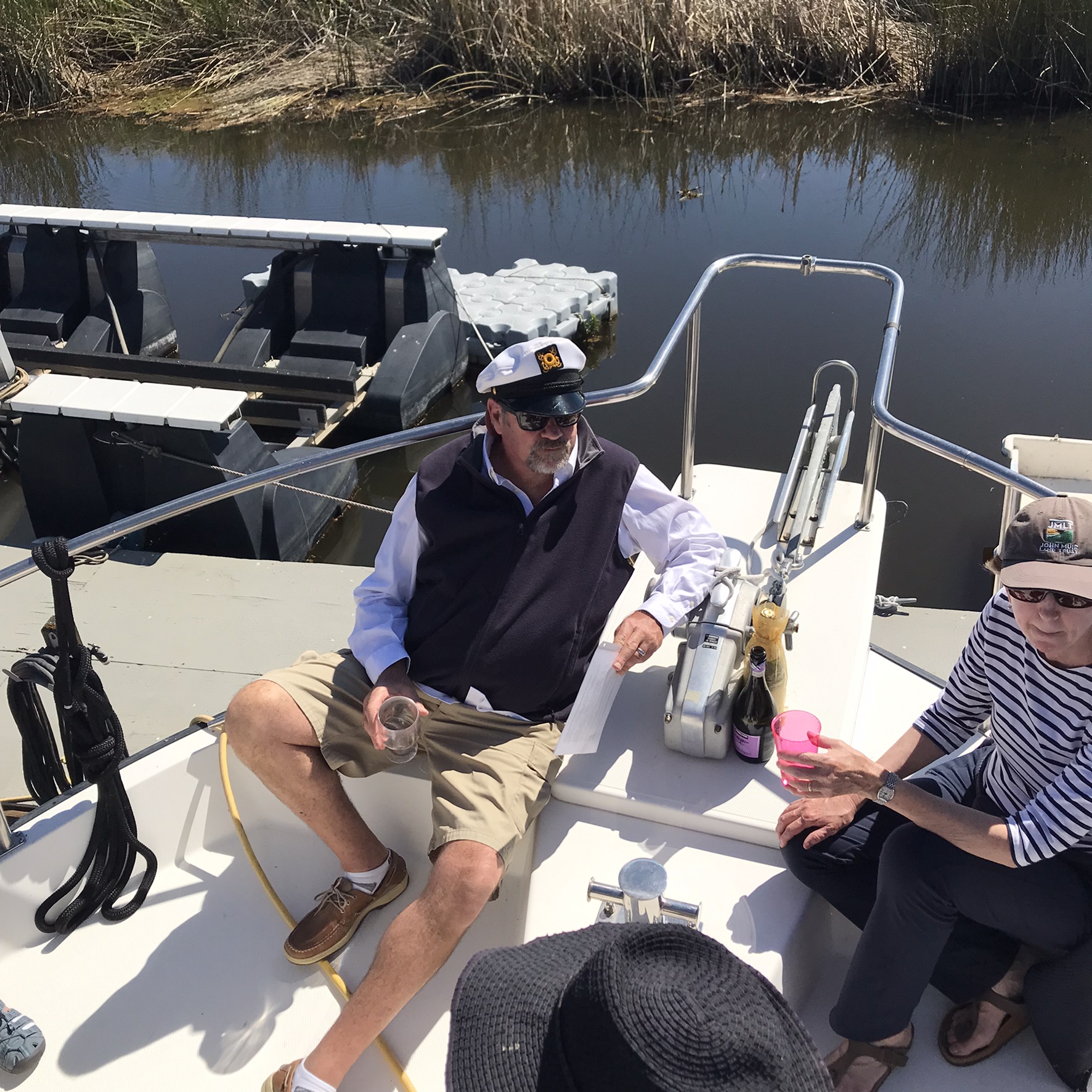
Nordic Tugs achieved immediate success with their first Boater Homing model, the Nordic Tug 26, due to a combination of innovative design, market timing, and strong consumer appeal:
- Fuel Efficiency:
- Unique Tugboat Styling:
- Affordable Pricing:
- The boat was introduced with a low introductory price, making it accessible to a wide audience. Buyers appreciated its value for money1.
- Strong Market Reception:
- Debuting at the 1979 Seattle Boat Show, the Nordic Tug 26 sold 37 units during the show and 54 by the end of the month, an extraordinary achievement in a market recovering from economic challenges14.
- The immediate popularity of the Nordic Tug 26 prompted competitors like Sundowner Tugs and Lord Nelson Tugs to enter the market, but Nordic Tugs had already established itself as a leader in this market.
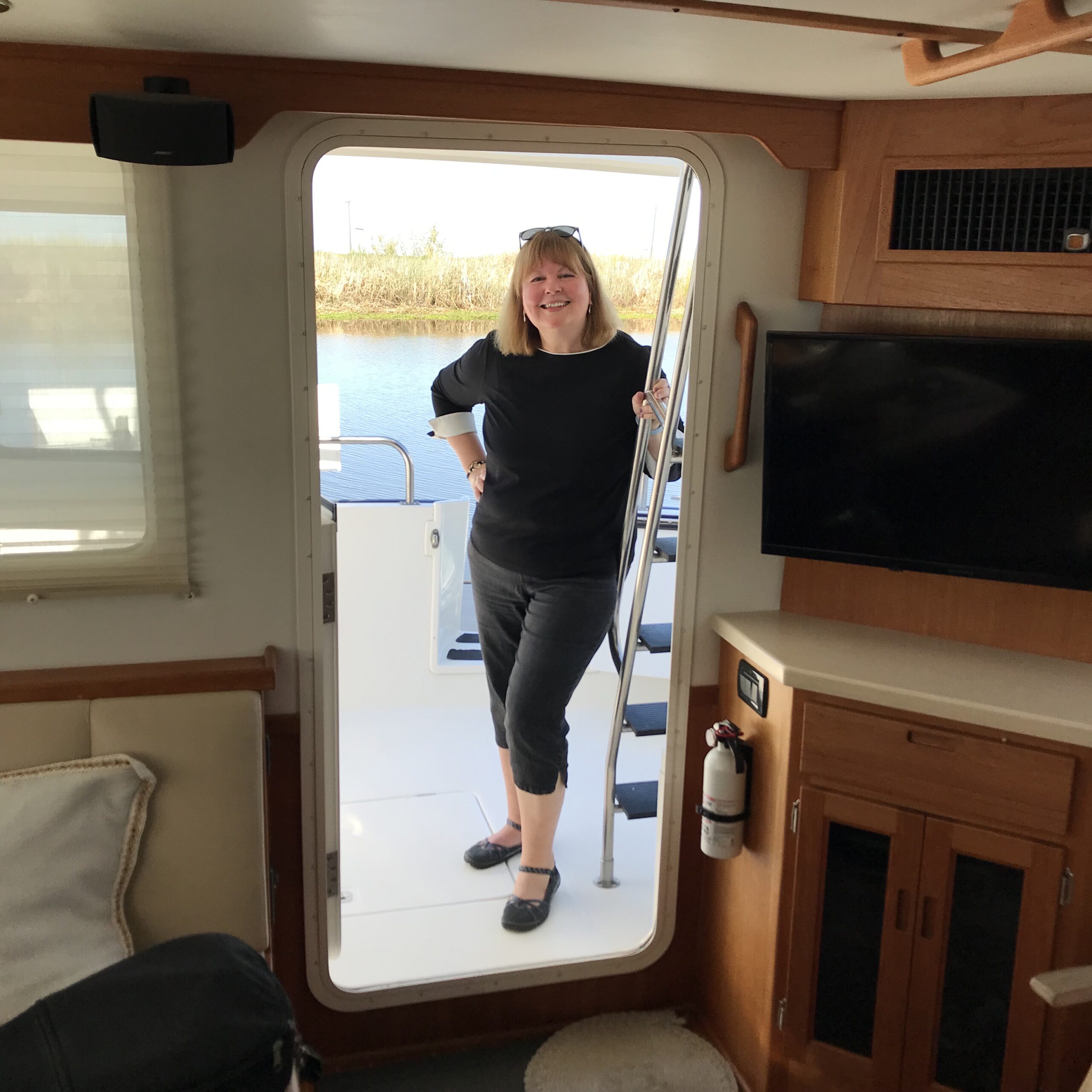
Founding and Early Years
- Founded by Jerry Husted in the late 1970s in the Pacific Northwest.
- Inspiration came from the need for fuel-efficient powerboats during the 1970s fuel crisis.
- The first Nordic Tug, a 26-footer, was introduced in 1979 at the Seattle Boat Show.
- It achieved immediate success, selling 33 boats during the 10-day show.
Key Developments
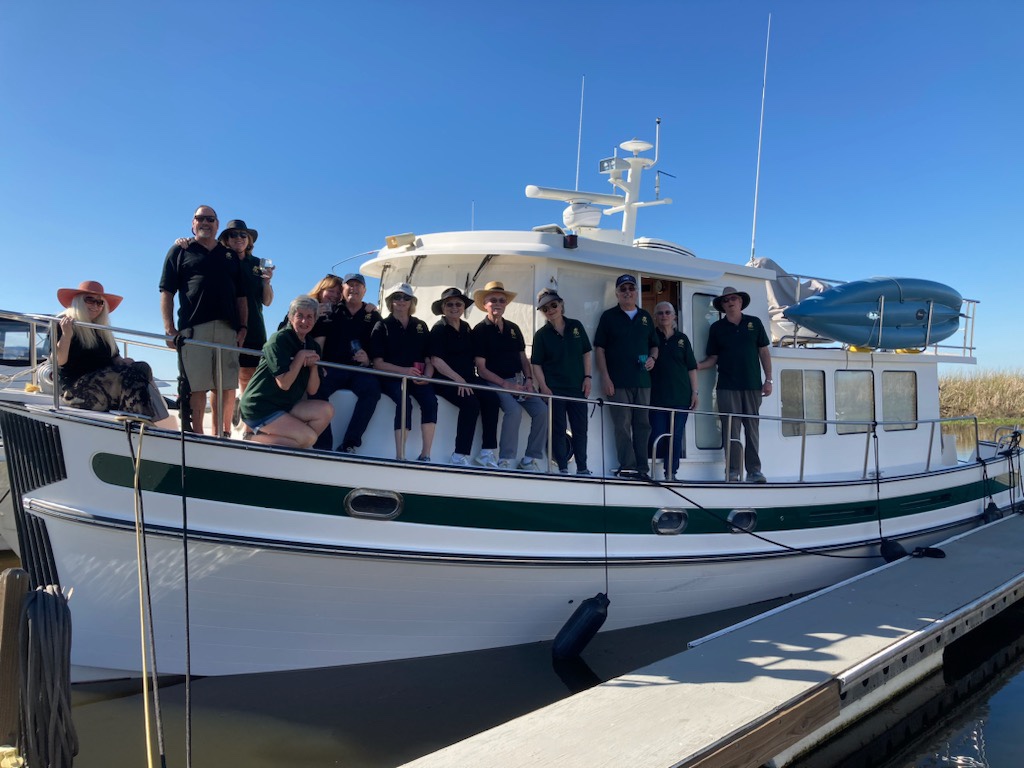
- The company expanded its lineup over the years, introducing larger models.
- By 2012, Nordic Tugs had built over 900 boats, ranging from 26 to 54 feet.
- Jerry Husted remained with the company for nearly four decades, retiring at age 80 in 2012.
Design Philosophy
- Nordic Tugs feature a semi-displacement hull designed by naval architect Lynn Senour.
- The design balances speed with fuel efficiency and takes styling cues from 1930s working tugs.
Current Status
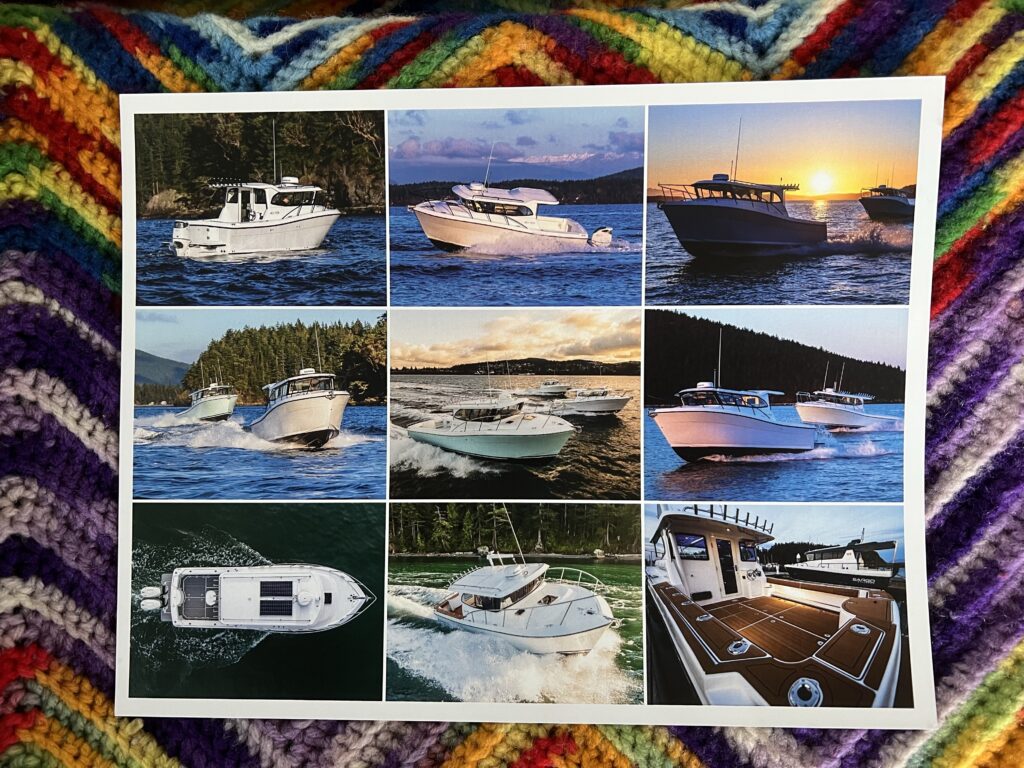
- As of 2025, Nordic Tugs continues to operate, producing boats at their facility in Burlington, Washington.
- The company is known for its high-quality craftsmanship and fuel-efficient designs.
- The company recently purchased Ocean Sport Boats
Ocean Sport Boats is a manufacturer of versatile cruising and fishing boats, known for their high-quality pilothouse designs. Here’s a brief history and current status of the company:
Origins and Ownership
- Ocean Sport Boats was originally founded by Ron Ming of Islands Marine Center on Lopez Island, Washington.
- In a significant development, Nordic Tugs, Inc. acquired Ocean Sport Boats. This happened prior to 2025.

Current Manufacturing
Ocean Sport Boats are currently built by Nordic Tugs, Inc. at their facility in Burlington, Washington. This location is about 50 miles north of Seattle1314.
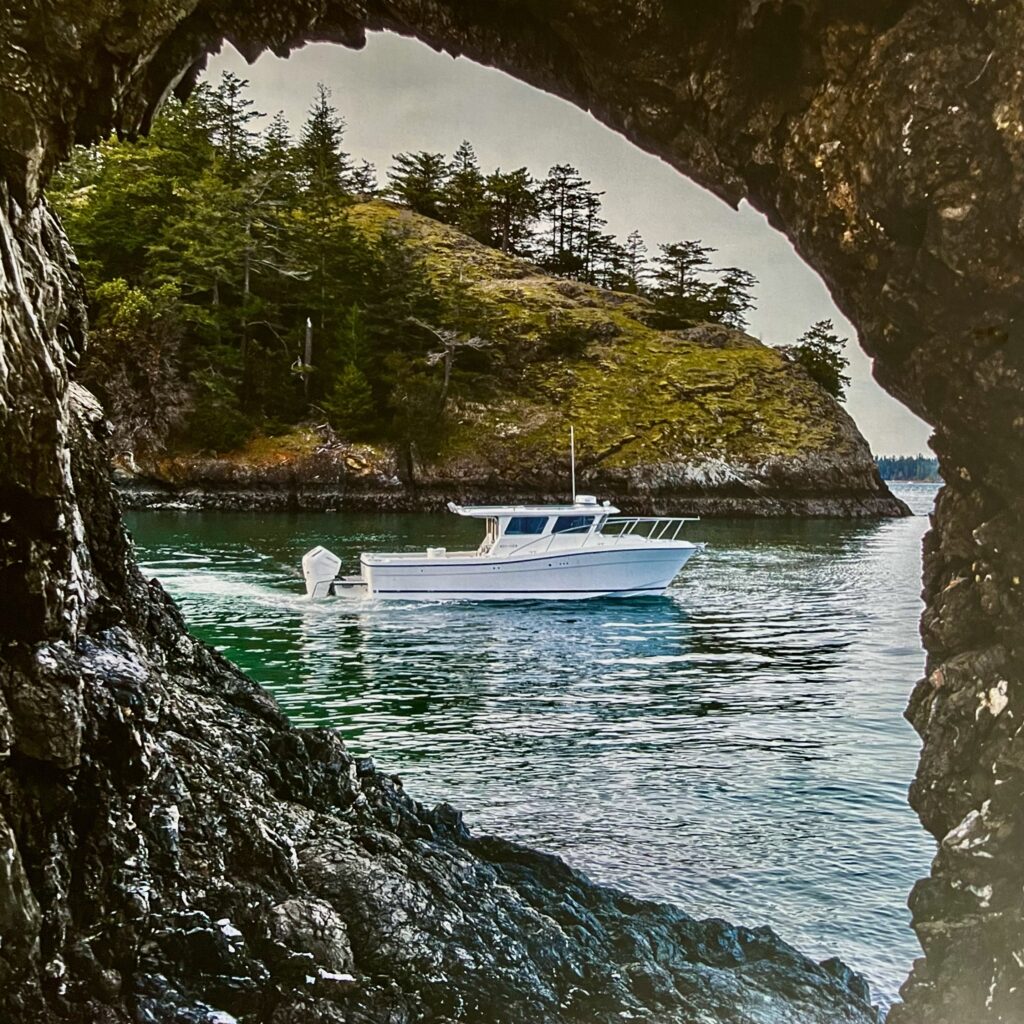
Production Details
- The Ocean Sport lineup includes models ranging from 27 to 36 feet in length4.
- Both inboard and outboard propulsion options are available, with Volvo Penta diesels for inboards and Mercury Verado outboards2.
- The boats are known for their spacious cockpits, strong hull construction, and versatility for both fishing and cruising24.
Recent Developments
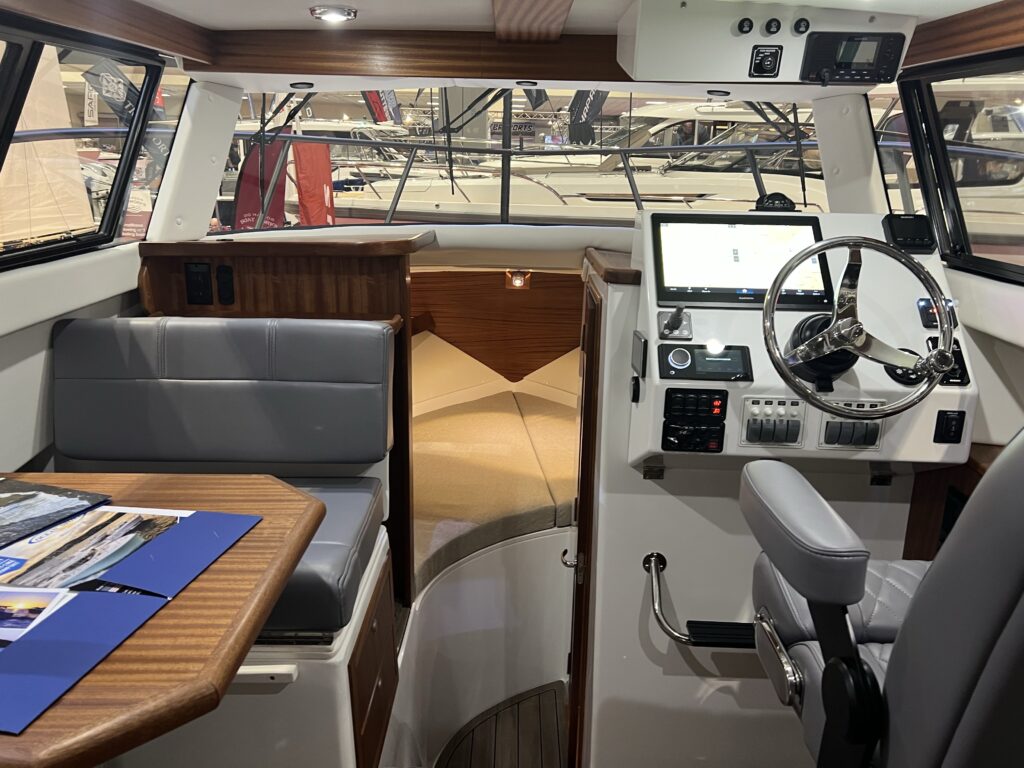
As of January 2025, Ocean Sport Boats is celebrating its 20th anniversary unveiled new models at the 2025 Seattle Boat Show, including the Ocean Sport 27 and Ocean Sport 364.
Ocean Sport Boats continues to operate as a distinct brand under Nordic Tugs’ ownership, leveraging the parent company’s manufacturing expertise while maintaining its own identity in the market.
American Tugs
Founding
- American Tugs is built by Tomco Marine Group, Inc., in LaConner, Washington.
- The first American Tug 34 was launched in August 2000.
Design Origins
- The American Tug design is based on an Alaska fishing boat hull designed by Lynn Senour in the early 1980s.
- Senour, who also designed for Nordic Tugs, was known for efficient, ocean-going sportfishing yachts and trawler cruisers.
Company Formation
- Tomco Marine Group was formed by experienced boat builders Tom Nelson, Kurt Schoppert, and Mike Schoppert.
- American Tugs are known for their stability and seaworthiness, with boats successfully cruising to Alaska and through the Panama Canal.
The spin-off of American Tug from Nordic Tug occurred due to the involvement of key personnel from Nordic Tugs who sought to pursue their own vision for building rugged, efficient cruising yachts. Here are the details:
Reasons Behind the Spin-Off
- In 2000, Tom Nelson, former president of Nordic Tugs, along with Mike Schoppert and Kurt Dilworth, established Tomco Marine Group in La Conner, Washington.
- They aimed to create seaworthy and appealing pleasure boats with a slightly different design philosophy than Nordic Tugs.
- Design Origins:
- The founders collaborated with Lynn Senour, the naval architect who had designed the original hulls for Nordic Tugs.
- For American Tugs, they repurposed a hull design Senour had originally developed for Bristol Bay fishing boats in the 1970s and 1980s. This hull was known for its stability, wide beam, and ability to handle rough seas12.
- Desire for Innovation:
- The founders wanted to build boats that retained the tug-style aesthetic but with features tailored to a different market segment, such as slightly larger interiors and more customization options.
- Geographic Proximity:
- Both Nordic Tugs and American Tugs are based in the Pacific Northwest (Burlington and La Conner, WA, respectively), reflecting their shared heritage and focus on rugged designs suited for local cruising conditions.
Key Personnel Who Moved to American Tug
- Tom Nelson: Former president of Nordic Tugs; brought decades of boatbuilding experience.
- Mike Schoppert: Expert in lofting, toolmaking, and fiberglass lamination; previously worked at Uniflite and Tollycraft.
- Kurt Dilworth: Engineer with experience in boat design and construction; contributed technical expertise to American Tug’s development2.
Why They Split
- The spin-off was likely driven by a combination of:
- A desire for creative independence.
- The opportunity to capitalize on a unique hull design (the Bristol Bay fishing boat mold).
- The chance to address a slightly different market niche by offering semi-custom builds and larger models.
American Tug’s Early Success
- The first model, the American Tug 34, launched in August 2000. It quickly gained popularity for its stability, wide beam, and efficient cruising capabilities2.
- By leveraging their expertise from Nordic Tugs and incorporating lessons learned, the founders positioned American Tug as a strong competitor in the tug-style cruiser market.
In summary, American Tug emerged as a spin-off of Nordic Tug due to shared personnel (including Tom Nelson) who wanted to explore new designs and market opportunities while maintaining ties to their Pacific Northwest roots.
Ranger Tugs
Ranger Tugs has a long and innovative history as a manufacturer of trailerable, trawler-style boats, rooted in the Pacific Northwest. Here’s a detailed look at their journey:
Founding and Early Years
- Established in 1958 as the Ranger Fiberglass Boat Company by Howard “Smitty” Smith in Kent, Washington. Initially, the company produced fiberglass dinghies, canoes, and small powerboats17.
- In 1998, Dave Livingston, his son John Livingston, and John’s wife Jennifer purchased the company from Smith when he retired. They renamed it Ranger Tugs and shifted its focus to building compact cruising boats17.
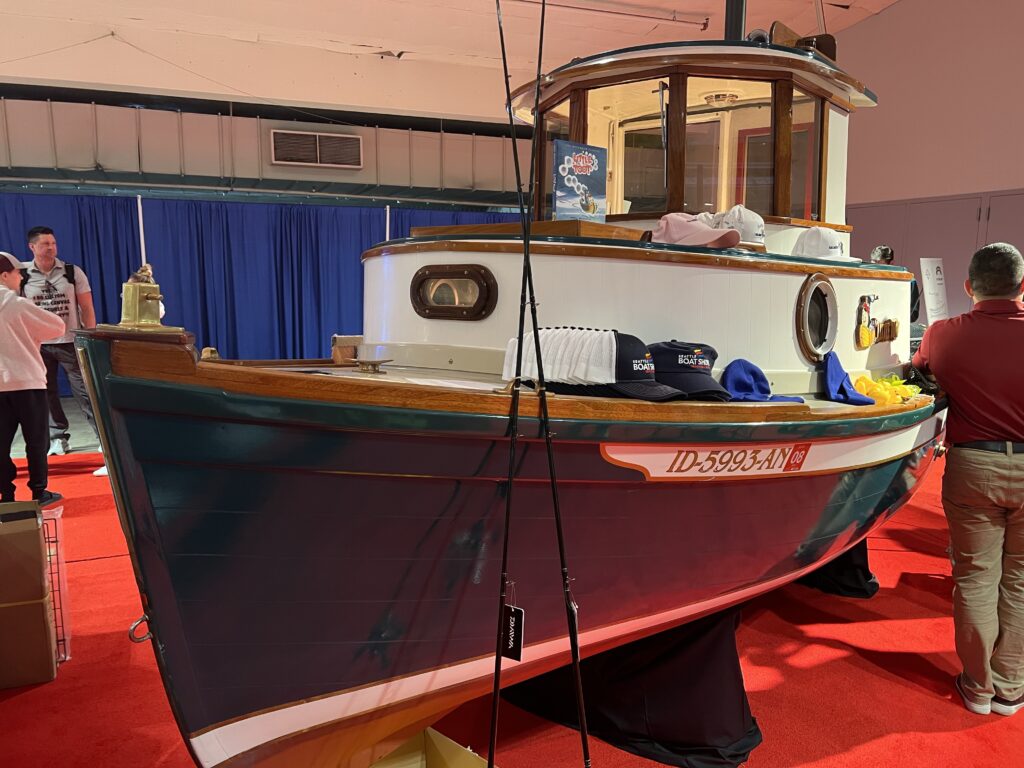
Key Milestones
- Launch of the R-21 Tug:
- Expansion with Larger Models:
- In response to demand, Ranger Tugs introduced the R-25 in 2006, which featured more space and amenities for extended cruising. This marked the beginning of their expansion into larger trailerable models13.
- Today, Ranger Tugs offers nine models ranging from 23 to 43 feet, including diesel inboard and gasoline outboard options13.
- Trailerable Trawlers:
- Boater Homing Concept:
- The versatility of Ranger Tugs inspired a new form of recreational boating called boater homing, where owners use their boats as both mobile homes on land and cruisers on water. This dual-purpose capability resonated with downsizing yacht owners and novice boaters alike1.
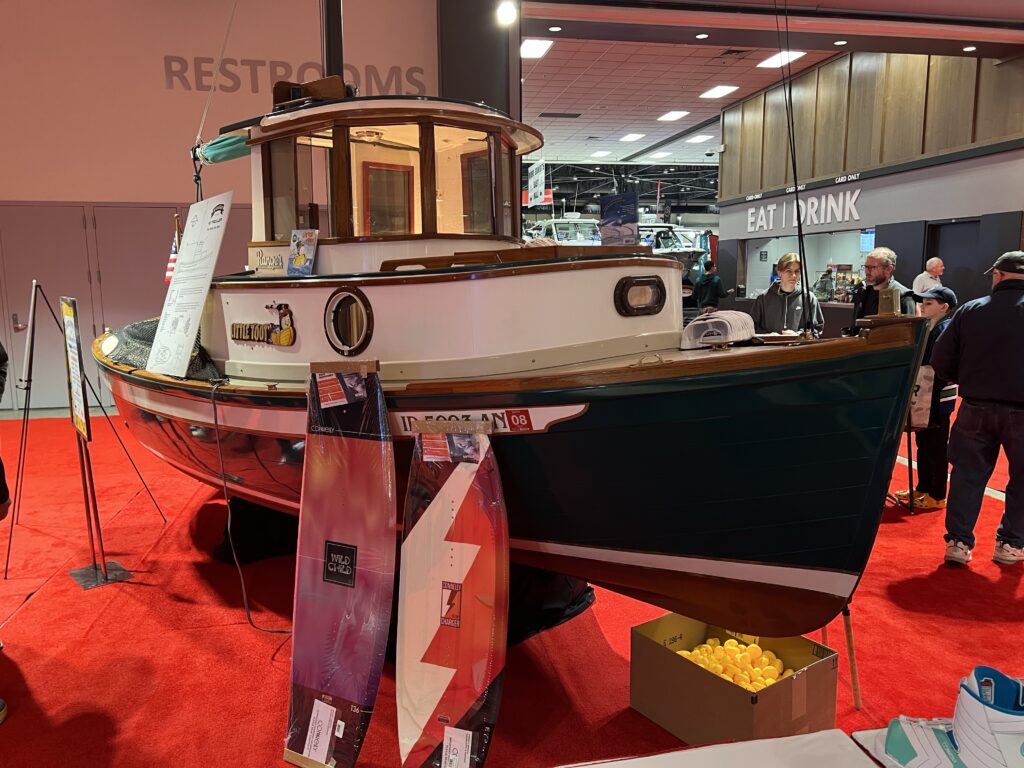
Innovative Leadership
- Dave Livingston, a veteran boat designer with experience at Bayliner, Wellcraft, and Larson, brought decades of expertise to Ranger Tugs. He developed innovative features like variable deadrise hulls for better performance and patented safety enhancements79.
- Under his leadership, Ranger Tugs became known for compact designs that maximize space while offering full amenities like bow thrusters, galleys, berths, and convertible dinettes79.
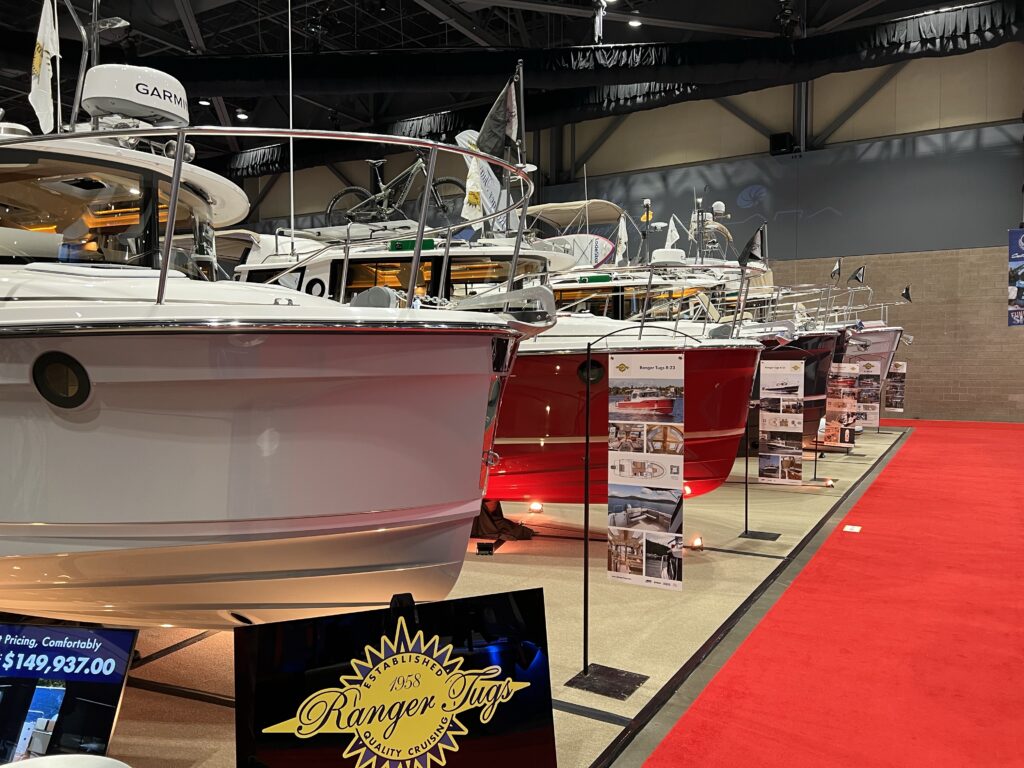
Current Status
Built in Washington state, modern-day Ranger Tugs are known for their comfort, seaworthiness, and innovative use of space. Designed for adventurous cruising, they offer features like fully-equipped galleys, cozy sleeping quarters, and spacious heads, making them ideal for extended trips on the water.
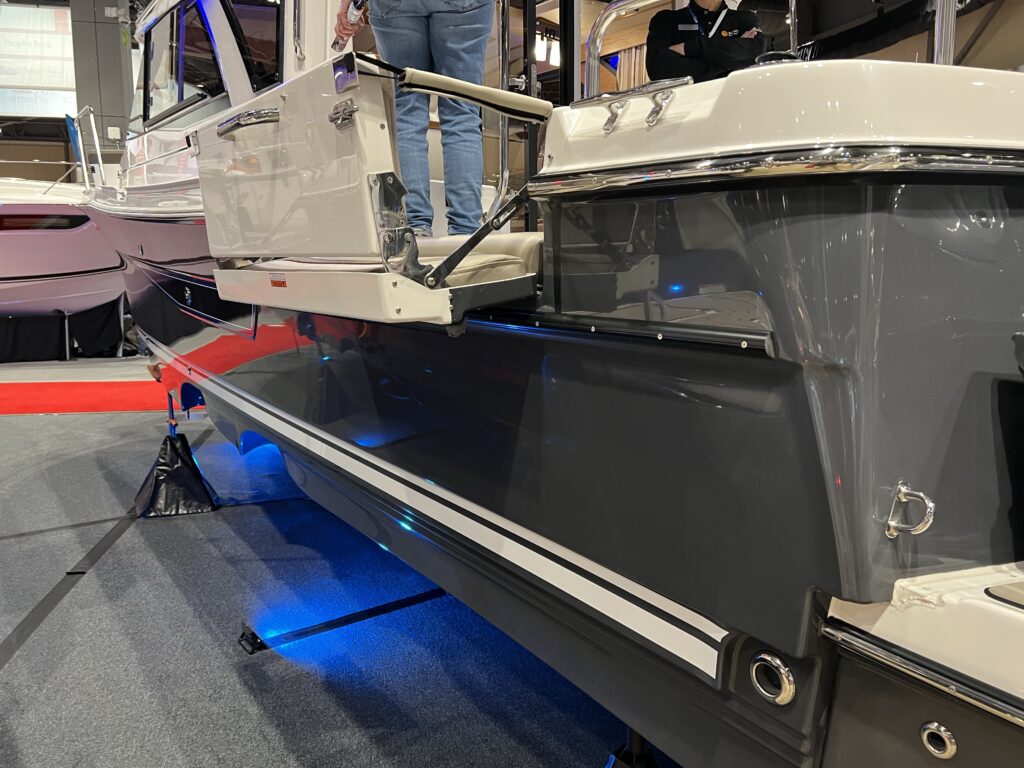
Beyond functionality, Ranger Tugs are built with a community in mind. Owners enjoy access to factory events, rendezvous, and a supportive network of fellow boaters who share their passion for life on the water (checkout tugnuts.com). The owners are expected to remain loyal to the brand moving to larger models as their families grow in numbers and then downsizing when appropriate and when interested in boater homing.
Easily trailerable, today’s models cruise between 20 and 35 mph, bringing distant waterways within reach and simplifying travel for boaters who love to explore diverse destinations. Ranger Tugs are appealing to both seasoned mariners and those new to boating.
The brand has evolved over the past 45 years and Ranger Tugs remains a favorite for modern-day adventurers
- As of 2025, Ranger Tugs remains family-owned and operates out of Kent, Washington. The company continues to innovate with a focus on high-quality craftsmanship and user-friendly designs.
- Their boats are celebrated for blending charm with practicality, making them a favorite among both experienced cruisers and first-time boat owners.
Ranger Tugs’ success lies in their ability to adapt to market demands while maintaining a focus on quality and innovation. By creating versatile trailerable boats that cater to modern lifestyles, they have carved out a unique niche in the recreational boating industry.
Conclusion
The evolution of Pacific Northwest boat designs from the 1970s to 2025 reflects significant shifts in priorities, materials, and propulsion systems. These changes highlight the region’s adaptability to market demands and technological advancements while raising questions about compatibility with the concept of boater homing.
Conclusions About Pacific Northwest Boat Builders
1. Historical Focus on Boater Homing:
• Early designs, like the San Francisco Pelican and other trailerable boats, prioritized versatility, allowing owners to explore remote areas while carrying camping gear and supplies.
• These boats embodied the boater homing concept by combining compact living spaces with the ability to navigate both inland and coastal waters.
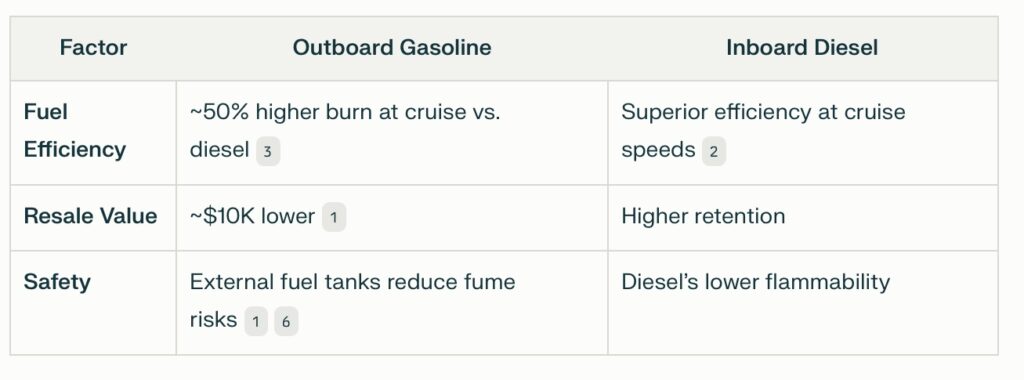
2. Shift Toward Outboard Engines:
• By 2025, many Pacific Northwest builders have transitioned from inboard engines to outboard propulsion systems, reflecting broader industry trends.
• Outboards offer advantages like easier maintenance, improved fuel efficiency, and better use of interior space. However, this shift may compromise some traditional boater homing features.
3. Adaptation to Market Trends:
• Builders have embraced sporty, high-performance designs with outboards to appeal to a younger, more recreationally focused audience.
• This represents a departure from the rugged, long-range cruising designs that characterized earlier Pacific Northwest boats.
4. Continued Innovation:
• Despite these shifts, Pacific Northwest builders remain leaders in crafting versatile boats tailored to their unique environment. From drift boats designed for whitewater rivers to trailerable sailboats and modern outboard-powered cruisers, the region continues to innovate.
Why Gasoline Outboards Are Favored
- Lower Initial Cost:
- Ease of Maintenance:
- Noise and Space Efficiency:
- Performance for Smaller Boats:
How Freed-Up Space Is Utilized
- Seakeeper Stabilizers:
- Lithium Battery Banks:
Ventilation Requirements for Gasoline Outboards
• Mandatory Pre-Start Ventilation:
• Federal law requires 4 minutes of powered blower operation before starting gasoline engines to purge explosive fumes from bilges.
• Natural ventilation (via intake/exhaust ducts) is insufficient for enclosed spaces; blowers are critical for post-1982 boats.
Compatibility of Sporty Outboard Designs with Boater Homing
3. Advantages:
• Trailerability: Many outboard-powered boats remain trailerable, preserving a key aspect of boater homing by enabling overland transport to new cruising areas.
• Space Efficiency: By freeing up interior space previously occupied by inboard engines, outboards allow for more comfortable living quarters.
• Ease of Maintenance: Outboards are easier to repair or replace in remote locations, aligning with the self-sufficiency valued by boater homers.
2. Challenges:
• Fuel Capacity: Outboards typically rely on gasoline rather than diesel, which may limit range compared to traditional inboard-powered trawlers designed for extended cruising.
• Durability: Sporty outboard designs often prioritize speed and performance over ruggedness, potentially making them less suited for harsh conditions like Arctic or remote cruising.
• Lifestyle Fit: The focus on sleek aesthetics and recreational use may not fully align with the practical needs of long-term liveaboard cruisers.
3. Hybrid Potential:
• Some modern designs successfully integrate sporty outboards with boater homing features by offering modular layouts, efficient hulls, and advanced electronics for navigation and comfort.
Conclusion
Pacific Northwest boat builders have evolved from crafting rugged, utilitarian vessels ideal for boater homing to embracing sporty outboard-powered designs that cater to modern recreational trends. While outboards offer benefits like efficiency and ease of use, their compatibility with true boater homing depends on how well they address long-range cruising needs such as fuel capacity, durability, and onboard livability. This evolution reflects both the changing demands of boaters and the region’s enduring commitment to innovation in design and functionality.